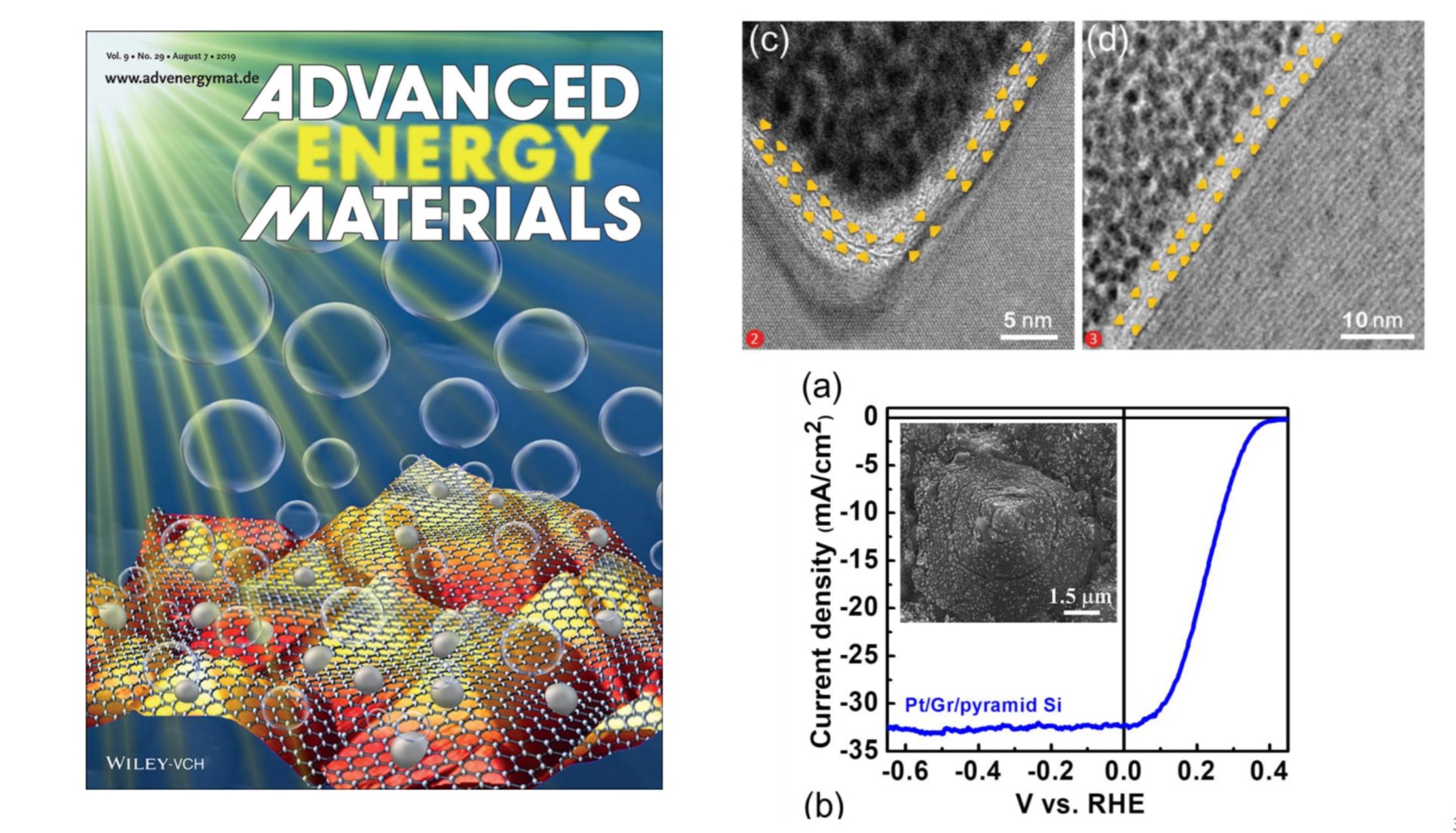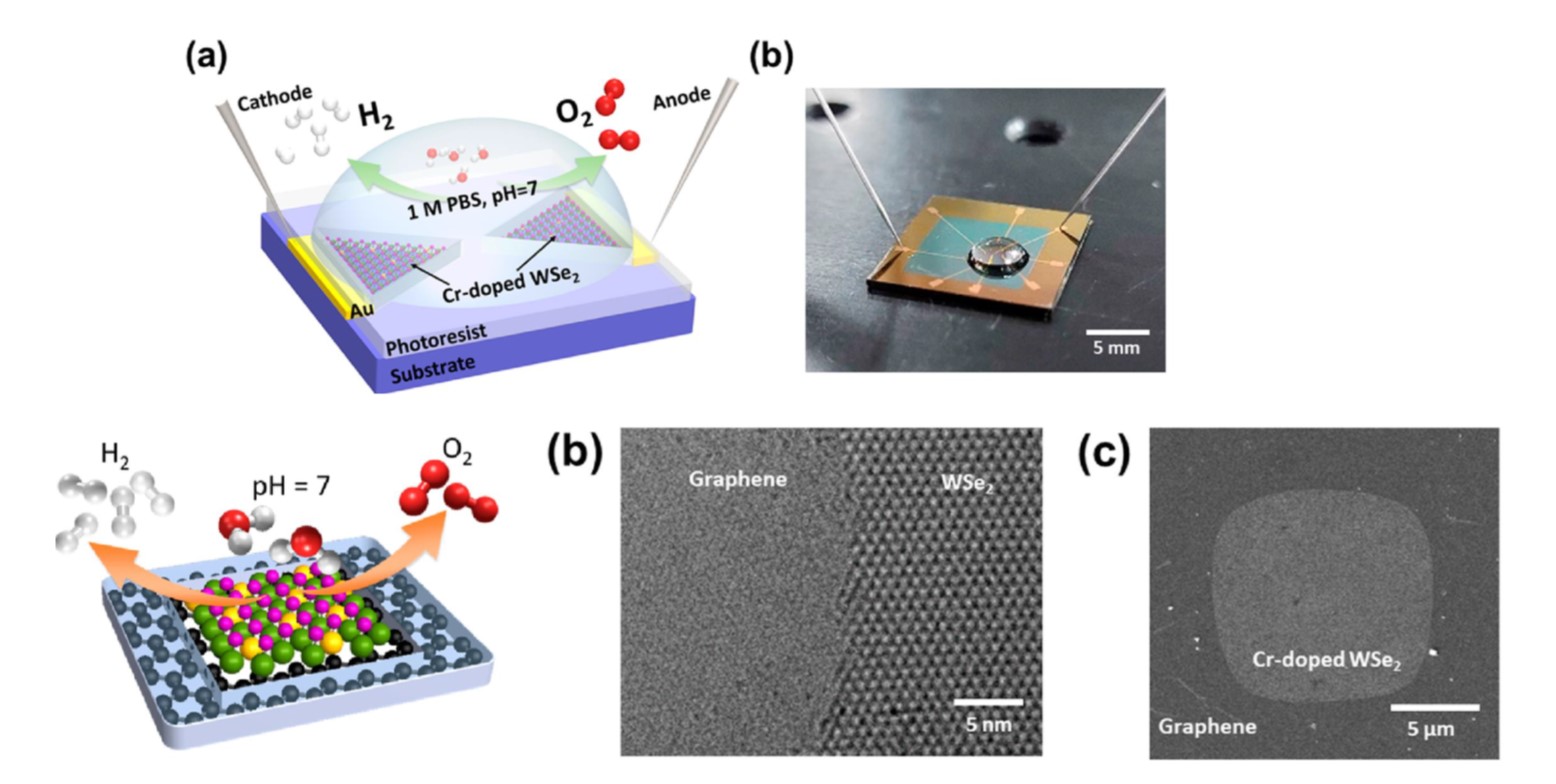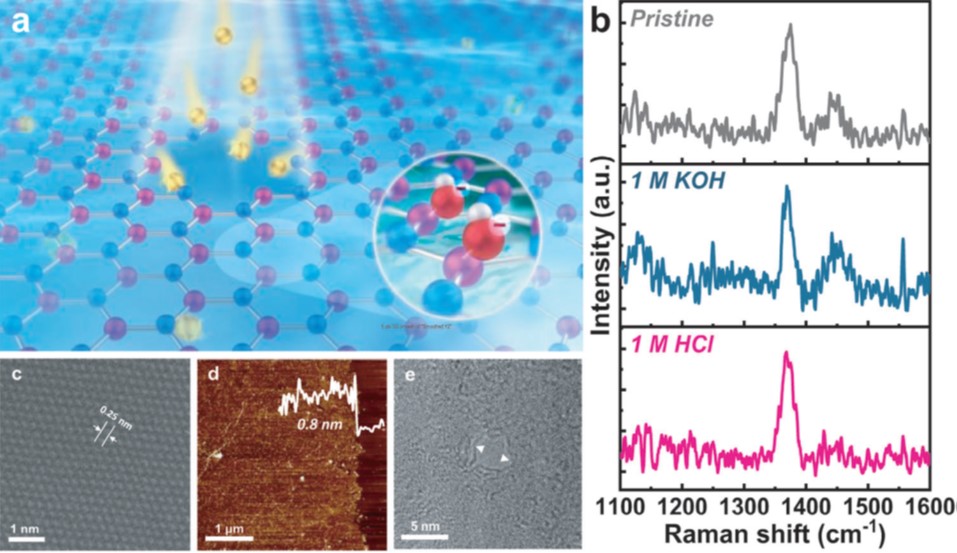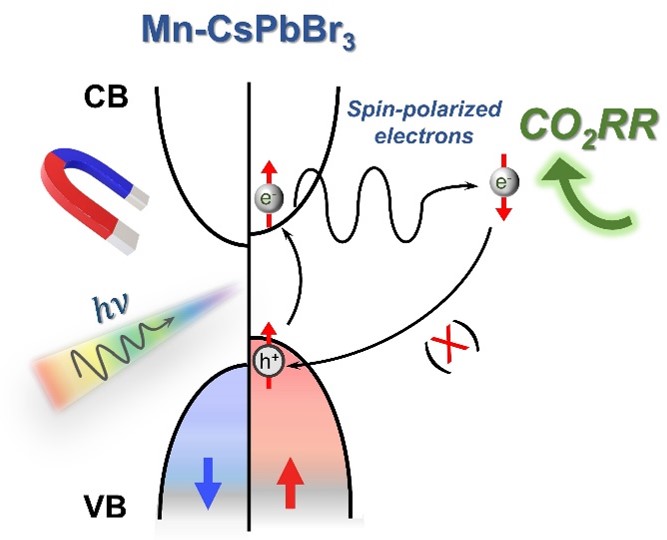
This work presents a novel photo-electrochemical architecture based on the 3D pyramid-like graphene/p-Si Schottky junctions. The formation of 3D pyramid-like graphene/p-Si Schottky junctions exhibits enhanced electrochemical activity and promotes charge separation efficiency. The inherent chemical inertness of graphene significantly improves the operational stability of 3D graphene/p-Si Schottky junction photo-electrochemical cells. The 3D pyramid-like graphene/p-Si Schottky junction photocathode delivers an onset potential of 0.41 V and a saturated photocurrent density of −32.5 mA cm-2 at 0 V (vs RHE) with excellent stability comparable to values reported for textured or nanostructured p-Si photocathodes coated with ultrathin oxide layers by the conventional atomic layer deposition technique.(Advanced Energy Materials, 1901022, (2019))

This work demonstrates the fabrication of an on-chip bifunctional two-dimensional (2D) monolayer (ML) WSe2/graphene heterojunction microreactor for efficient overall water splitting in a neutral medium (pH =7). Through the synergistic atomic growth of the metallic Cr dopant and graphene stitching contact on the 2D ML WSe2, the bifunctional WSe2/graphene heterojunction microreactor consisting of a full-cell configuration demonstrates excellent performance for overall water splitting in a neutral medium.(ACS Nano,16, 18274, (2022))
Crack-filled graphene (CFG) films with Au nanoparticles showed excellent electrical properties as transparent electrodes. A graphene/Si Schottky junction solar cell based on the CFG fi lm demonstrated a nearly 30% enhancement in power conversion efficiency (PCE) compared with the device in which the graphene was not subjected to the crack-filling treatment, andthis enhancement is mainly attributed to a significant improvement in the fill factor (FF) of the graphene/Si Schottky junction solar cell device as a result of superior electrical properties of CFG films. The CFG films ofwhich the cracks in graphene were filled with Au nanoparticles provide an effective route for producing large-area, high-quality, graphene-based transparent conductive films for future electronic applications. (Advanced Materials, 27, 1724 (2015) ; Energy and Environmental Science, 8, 2085 (2015))

Atomically thin two-dimensional (2D) materials have emerged as promising candidates for efficient energy harvesting from ionic gradients. However, the exploration of robust 2D atomically thin nanopore membranes, which hold sufficient ionic selectivity and high ion permeability, remains challenging. Here, the single-layer hexagonal boron nitride (hBN) nanopores are demonstrated as various high-performance ion-gradient nanopower harvesters. Benefiting from the ultrathin atomic thickness and large surface charge (also a large Dukhin number), the hBN nanopore can realize fast proton transport while maintaining excellent cation selectivity even in highly acidic environments. Therefore, a single hBN nanopore achieves the pure osmosis-driven proton-gradient power up to ≈ 3 nW under 1000-fold ionic gradient. In addition, the robustness of hBN membranes in extreme Ph conditions allows the ionic gradient power generation from acid-base neutralization. Utilizing 1 m HCl/KOH, the generated power can be promoted to an extraordinarily high level of ≈ 4.5 nW, over one magnitude higher than all existing ionic gradient power generators. The synergistic effects of ultrathin thickness, large surface charge, and excellent chemical inertness of 2D single-layer hBN render it a promising membrane candidate for harvesting ionic gradient powers, even under extreme pH conditions. This is our first work to demonstrate the application of 2D atomic membranes in blue energy.(Small, 2306018, 2023)

“Spin” has been recently reported as an important degree of electronic freedom to improve the performance of electrocatalysts and photocatalysts. This work demonstrates the manipulations of spin-polarized electrons in CsPbBr3 halide perovskite nanoplates (NPLs) to boost the photocatalytic CO2 reduction reaction (CO2RR) efficiencies by doping manganese cations (Mn2+) and applying an external magnetic field. Mn-doped CsPbBr3 (Mn-CsPbBr3) NPLs exhibit an outstanding photocatalytic CO2RR compared to pristine CsPbBr3 NPLs due to creating spinpolarized electrons after Mn doping. Notably, the photocatalytic CO2RR of Mn-CsPbBr3 NPLs is significantly enhanced by applying an external magnetic field. Mn-CsPbBr3 NPLs exhibit 5.7 times improved performance of photocatalytic CO2RR under a magnetic field of 300 mT with a permanent magnet compared to pristine CsPbBr3 NPLs. Our result shows that manipulating spin-polarized electrons in photocatalytic semiconductors provides an effective strategy to boost photocatalytic CO2RR efficiencies. (Journal of American Chemical Society, 144,15718, (2022))